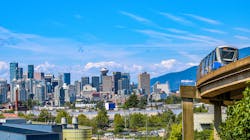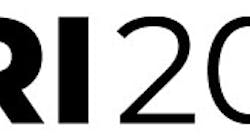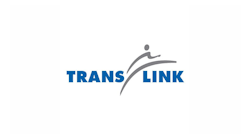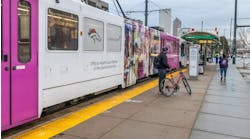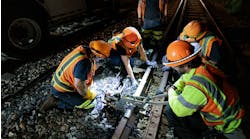SkyTrain: Moving from Reactive to Preventive Rail Maintenance Toward a State of Good Repair
SkyTrain, Vancouver’s iconic rail transit system, is a system in motion. Since the opening of the original Expo Line, named and timed to coincide with the 1986 World Exposition on Transportation and Communication (Expo 86), SkyTrain, which moves more than 115 million commuters per year pre-COVID-19, has been a story of expansion and growth, and the growing pains that come with it.
A modern system when it opened in 1986, unforeseen wheel and rail wear issues started to appear shortly after startup. A few years of trial and error and hard-won development of innovative rail profile grinding and wheel re-truing programs, along with the introduction of newly developed friction modifiers, normalized wear and stabilized the system. All was good. Unfortunately, as often happens on transit systems, competing priorities and cost reductions led to a lapse in SkyTrain’s focus on rail maintenance practices.
SkyTrain is maintained and operated by British Columbia Rapid Transit Company (BCRTC) as part of TransLink, Metro Vancouver’s transportation authority, and is relatively new as urban transit systems go. The 30-km (18.6-mile) Expo Line opened in 1986 and added extensions in the 1990s. The 20-km (12.4-mile) Millennium Line was added in 2002 and the 11-km (6.8-mile) Evergreen extension in 2016. All told, the system is comprised of 121 kilometers (75.2 miles) of standard-gauge, double-track utilizing 115-pound rail with an assortment of resilient rail fasteners on concrete slab track and fully automated train control (GoA4). The system has 39 stations and operates up to 21 hours per day, seven days a week. Most of the system is built on elevated guideway—hence the name SkyTrain –but there are also approximately 18 kilometers (11.2 miles) of underground and at-grade track. The maximum normal operating speed is 80 km/h (approximately 50 mph).
Three generations of rolling stock — MK I vehicles built by Urban Transportation Development Corporation Ltd. (UTDC) and MK II and MK III vehicles built by Bombardier (before it was acquired by Alstom) — operate in two-, four- and six-car sets, depending on the line. Vehicles are driven by a linear induction propulsion system with two linear induction motors mounted on the underside of each vehicle 10 mm above the reaction rail, which is installed between the running rails. The wheels do not generate tractive effort. Electricity for the propulsion system is delivered via power rails mounted on the inside of the guideway parapet walls. Solid steel, high-conicity wheels are mounted on self-steering bogies, which are unique in North America.
“The steerable bogies can handle very tight curvature with minimal flange contact, so there is very little gauge-face rail wear in curves. This allows BCRTC to use a single rail profile for tangents and curves on the system,” said Matt Doyle, TransLink director of Project Management. “The downside is that we see corrugation and related noise and ride quality issues.”
In addition to corrugation, wear-related issues resurfaced with the capacity expansion for the 2010 Winter Olympics SkyTrain added 48 new cars, representing 24 additional trains — a 20 percent increase in traffic — to the system.
“I don’t think we fully appreciated the impact that the higher frequency service would have on the system, specifically its effect on the rail,” Doyle said.
By 2014, the wear and tear from millions of service kilometers manifested itself in rail surface shelling and spalling, noise-generating corrugation and, more significantly, a couple “reportable” rail defects that required intervention — clear indications to management that it was losing the fight.
“The system was degrading quicker than we could maintain it,” Doyle said.
Concerned that further degradation of the rail surface could lead to replacing significant amounts of rail if this trend wasn’t addressed more effectively, Doyle, who was BCTRC’s director of railway infrastructure at the time, brought in Advanced Rail Management (ARM) to conduct a comprehensive assessment of rail and wheel conditions throughout the system.
Immediately evident during ARM’s initial inspection and assessment was a broad wheel/rail contact band, indicting a high degree of wheel/rail conformality that contributed to the development and growth of rolling contact fatigue and corrugation, which in turn led to further deterioration and excessive wheel/rail-generated noise on the system.
“The precise operation of SkyTrain’s Automated Train Operation (ATO) system, which ensures that trains accelerate and decelerate at the exact same locations when coming into and leaving stations, tends to generate corrugation on the system, especially on the older, softer rail on the original Expo Line,” said ARM Director of Projects and Business Development Mark Reimer.
The most significant type of defect observed was the formation of squats, which are created by high wheel/rail creep forces that stress the rail material just below the surface, producing shelling that results in material breaking out from the rail surface.
“A lot of damage occurred in high-impact areas, such as turnouts,” Reimer said.
Following the assessment, the first order of business was to conduct a corrective grinding program to remove the surface damage and as many defects as possible (some of the shells were too deep to be removed by grinding). The next order of business was to concurrently re-apply the target rail profile, which is designed to perform with SkyTrain’s custom wheel profiles and work as a wheel/rail system.
Ramped up rail grinding
While BCRTC regularly operates an in-house eight-stone switch and crossing grinder, it alone is not sufficient to address the amount of maintenance required of the rail on the system. SkyTrain contracted ARM, which brought in Loram Maintenance of Way, Inc., which operates an eight-stone production grinder with higher horsepower motors, to perform the initial corrective grind (and the subsequent annual grinding program of approximately 40 shifts per year) under the direction of an ARM grinding specialist.
The initial corrective grind focused on the Expo Line, which had the oldest and softest rail on the system and needed the most attention. This was followed by the Millennium and the newer Evergreen lines. With the most serious rail surface damage addressed by the initial corrective grind, BCRTC and ARM directed their efforts toward getting the system into a maintenance mode and ultimately into a preventive mode of grinding. A critical aspect of the ongoing program is to fully utilize the available work windows to maximize productivity.
“Effective contract grinding requires a collaborative effort,” said Peeter Vesik, BCRTC asset integration project manager, who, in his former role as technical analyst in the Rail Maintenance Division, coordinated the contract and in-house grinding programs over the past five years. “We know that grinding is not cheap. We’re always looking for ways to gain efficiency by trying different methods, speeds and stones to complete as much work per shift as possible to maximize our maintenance windows”
In addition to managing the nightly grinding effort to ensure that all defects that can be removed are removed and that the target profile and the desired contact band are returned to spec, ARM also advises BCRTC on which segments of track are most effectively covered by the contract grinder and which are best addressed by the in-house grinder. The in-house grinder currently completes 60 to 70 kilometers (37.3 to 43.5 miles) of maintenance grinding per year.
“ARM is really good at listening to us about our needs and finding solutions to problems,” Vesik said. “They track their own grinding progress on a daily basis and provide detailed reporting through their ARMapp software, which also tracks the locations and number of passes and segments completed by our own in-house grinding.”
BCRTC has learned over the years to make the most of the grinding effort by single tracking — grinding on one track while operating revenue trains on the other — where possible. Instead of starting work at 1:00 a.m., as was typically the case, grinding now starts at 11:00 p.m. Single tracking enables BCRTC to better utilize its maintenance windows while still providing sufficient service during hours in which ridership is traditionally lower.
“When your track windows are only two- to three-hours long, the extra grinding time allows us to effectively double the work window. That’s huge,” Vesik said.
BCRTC has also learned to strategically stage the grinding equipment when parking it for the night so that it’s in position to make the most of the available window the following night.
“We make sure that a fuel truck can access the location, grinding stones can be replaced and other daily maintenance can be performed. We do this to minimize non-productive time because every minute of grind time is valuable,” he said.
BCRTC’s “bang-for-the-buck” productivity metric is track meters completed per shift. In each year since 2018, the contracted grinder has incrementally increased the average of completed track meters per shift, from 1,560 track meters per shift in 2018 to 2,007 track meters per shift in 2021. In addition to its dollars-and-cents calculation, the productivity metric also provides a snapshot of the overall rail condition on the system.
“The number of grinding passes required to restore or maintain rail is directly related to its condition,” Vesik said. “The need for fewer passes is an indicator that not only is the rail health improving, but that we are heading toward a preventative state, the goal of all railways.”
“There were some growing pains,” Doyle noted, but added that “we’re now transitioning from a corrective to a preventive grinding program and a state of continuous improvement. We have the ability to maintain our rail (and wheels) to an acceptable level, but we’re looking at how to make that more efficient and more responsive.”
Toward that end, SkyTrain is currently planning to replace its in-house grinders. Increased in-house capacity will enable BCRTC to advance its preventative grind program and balance grinding capacity with future line extensions on the horizon.
Noise: A condition indicator
With the rail surface condition well in hand, BCRTC was able to direct energy and resources toward another high-priority, high-profile issue — one that all rail transit systems face to varying degrees: noise. Specifically, wheel/rail-generated noise.
As a system that operates primarily on an elevated guideway near businesses and densely populated residential communities in Vancouver’s packed urban environment, noise is a genuine problem. And controlling it is a real challenge. But having successfully addressed one formidable challenge, the BCRTC engineering/maintenance team rolled up their sleeves to tackle another.
“Arresting wear and degradation was our problem, but we’ve moved beyond that,” Doyle said. “Noise is now our priority.”
“We don’t just want to mask noise or put a band-aid on the problem,” Vesik added, “We want to address the root cause.”
BCRTC determined that addressing — and ultimately reducing — wheel/rail-generated noise, which can exceed 90 decibels (dBA) on some parts the system, would not only benefit riders and neighbors near the tracks, , it could also serve as a bellwether of improving or degrading track conditions, since noise can be an indicator of track condition.
“Although noise isn’t necessarily a direct indicator of poor condition, we can use noise and impact vibration to home in on locations that may require maintenance,” Vesik said. “We can also look at the assets in these locations to see if we need to improve the materials, like using harder rail or a friction modifier, to reduce corrugation and increase the interval required for maintenance.”
While viewing asset management through a noise lens can be effective from a maintenance perspective, it also makes sense from a business perspective, Vesik says.
“Controlling noise helps improve the state of good repair and extends asset life. Looked at the other way, improving the state of good repair will likely improve ride quality and reduce noise and the number of residents’ complaints,” he explained.
“If we can control the noise to acceptable levels,” Doyle added, “we can be confident that the system is in a state of good repair.”
Since SkyTrain is not regulated by the U.S. Federal Transit Administration, BCRTC refers to a state of good repair as an engineering standard, rather than a legal or regulatory standard.
“Our goal is 100 percent asset performance when performing scheduled maintenance and being able to predict the end of the useful life of an asset and having a plan to replace it,” Vesik said.
With that in mind, TransLink commissioned a study in 2018 to assess noise on the SkyTrain system and recommend ways to deal with it. The initial report recommended looking into the feasibility and effectiveness of six noise-mitigation measures:
— Improvements to switch maintenance practices
— Investigation of harder rail steel
— Re-introduction of friction modifiers to improve long-term rail condition
— Improvements to rail grinding practices
— Installation of rail dampers to reduce noise radiated from the rails
— Development of guidelines for new residential developments near SkyTrain
BCRTC and its consultant SLR Consulting spent two years investigating these noise-mitigation measures. In each, BCRTC performed in-track prototype testing.
“We weren’t just investigating a theory,” Vesik said. “We collected data from actual field investigations into each of these measures to prove that they were, indeed, effective.”
For switch maintenance, for example, BCRTC replaced switches and monitored and compared impact levels to those from the previous installation to see if it could reduce and maintain a low-impact level. Investigation showed that replacing worn switches reduced noise levels by at least 10 dBA and possibly more. As a result, BCRTC implemented a program to replace turnouts that are approaching the end of their designed service life. On average, 10 of the 123 turnouts on the system will be replaced per year.
Rail dampers installed in areas with corrugated track reduced noise levels by up to six dBA. BCRTC is planning to use rail dampers to treat a total of 3.2 km (approximately two miles) of track in areas where residents are exposed to high noise levels and where other noise mitigation measures may not be effective.
For the friction management tests, BCRTC installed a wayside top-of-rail friction modifier system and monitored its performance for six months.
“We used the data collected at the site to measure friction levels and their effect on rail corrugation and noise with respect to a dry rail baseline,” said Vesik.
Data has also shown that the need for maintenance grinding correlates well to rail hardness. The softer 260-Brinnell (Bhn) rail that was laid when the Expo Line was built in the 1980s tends to corrugate and flatten out and lose its profile faster than harder 350-Bhn to 370-Bhn rails that are being installed on the system today.
“We found that while high-strength rail will still corrugate, we can extend the grinding cycles because it doesn’t corrugate as quickly,” Vesik told delegates at the annual Rail Transit Wheel/Rail Interaction conference in 2021.
The use of 370-Bhn replacement rail is expected to reduce noise levels by five dBA on the Expo Line.
BCRTC has also developed guidelines for acoustic assessment and design of new residential developments along the SkyTrain lines.
“The new development guidelines encourage and provide guidance to city planners and developers to design buildings around the transit system appropriately, and ensure dwellings are comfortable” Vesik said. “We’re working on the things that we can control, such as source noise, but designers also must be responsible.”
“Building on our extensive 30-plus-year experience, starting from a demonstration project, to being one of the longest automated systems in the world, we generally have an idea of what hasn’t provided value,” added Geoff Morbey, BCRTC’s director of railway infrastructure. “This knowledge is very helpful as we transition from our previous reactive maintenance methodologies, to one that entails a holistic asset management approach, balancing between the life cycle of the assets, the state of good repair and the overall customer experience.”
-------------
Bob Tuzik is publisher of Interface, the Journal of Wheel/Rail Interaction and executive co-program director of Wheel/Rail Seminars.

Robert Tuzik
Bob Tuzik is publisher of Interface, the Journal of Wheel/Rail Interaction and executive co-program director of Wheel/Rail Seminars.
